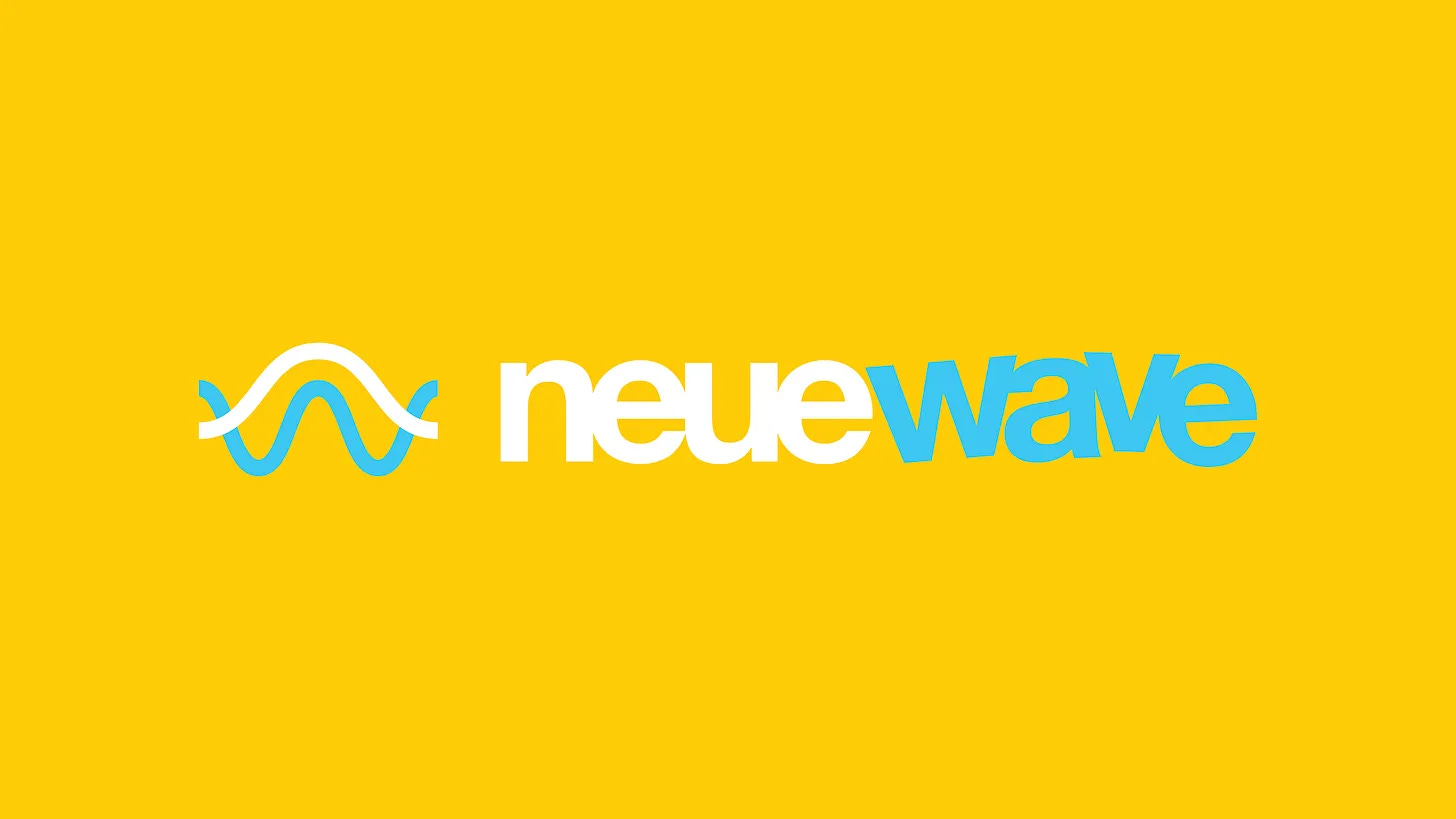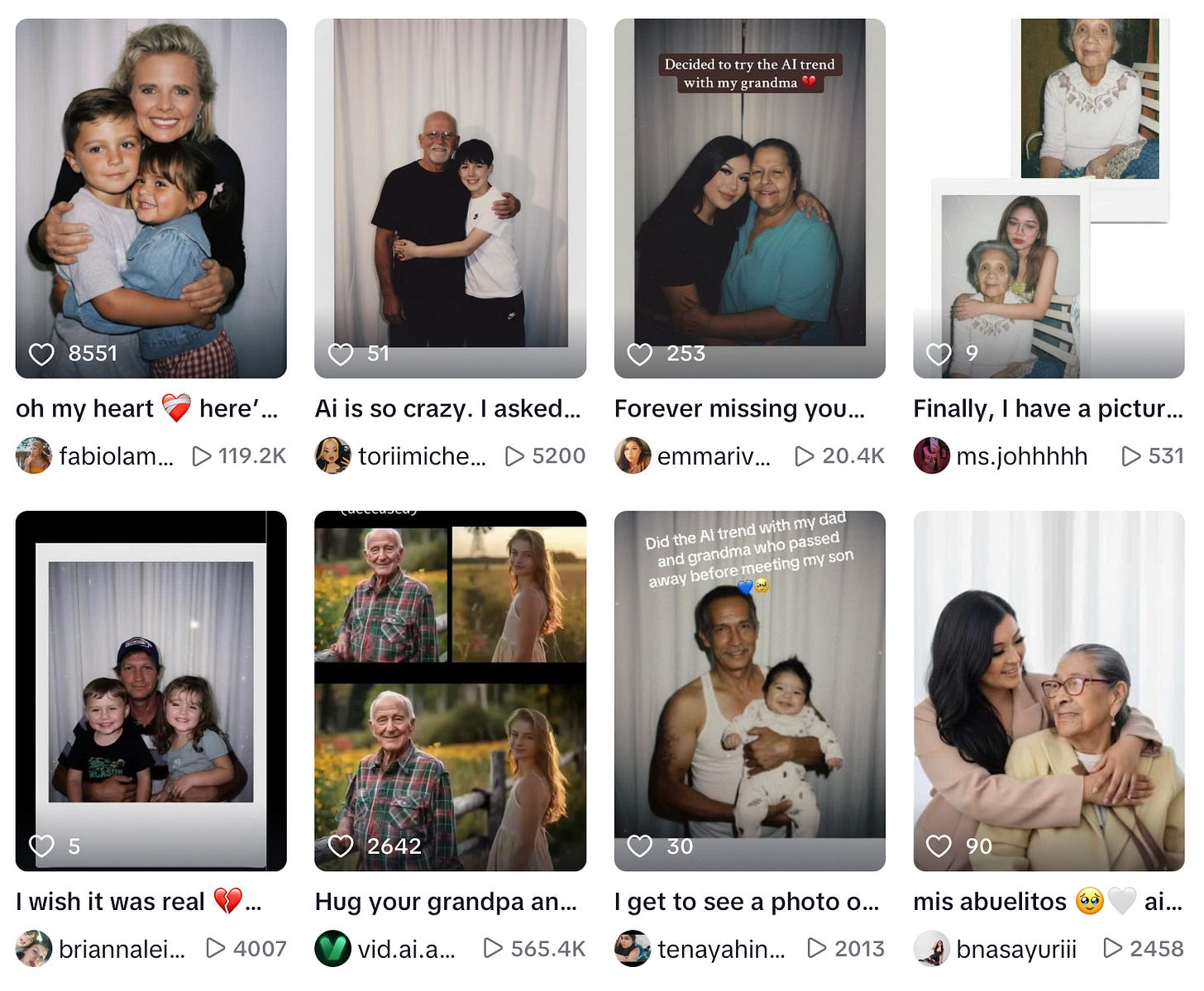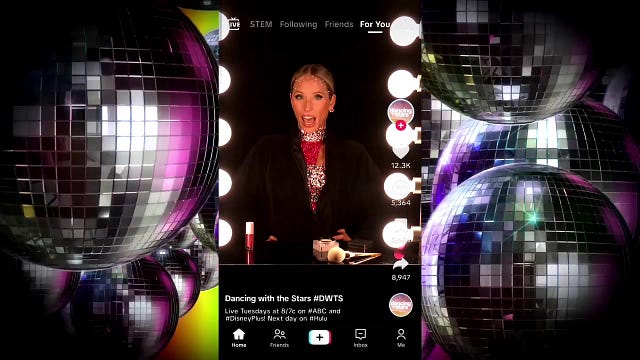October 2025 Trend Report
Dancing in the AI Coffee Shop
Welcome to neuewave!
Welcome to the October edition of neuewave: maybe the only trend report this month that won’t cover Taylor Swift.
Are we experiencing a collective déjà vu right now? No! Taylor Swift has once again created an intense public discourse that is hard to ignore. However, we will set that aside for a moment to discuss a number of other topics we think people should be talking more about, and what emerging trends are revealing about our evolving culture.
Before we dive in, did you know that neuemotion turns 2 years old this month? October 17th to be exact! And, yes, we are throwing a party. We can’t reveal the details just yet, but be sure to follow us on LinkedIn to stay updated on the celebration – you won’t want to miss it.
Let’s dive in.
👛 The Modern Heirloom
There was a time, not so long ago, when people made purchases and chose gifts with future generations in mind. Items weren’t just functional; they were intended to become beloved heirlooms, meant to last and be passed down through the generations. From furniture to clothing, to jewelry, and collectables, things were bought with a keen eye for intention and craftsmanship—investments in a legacy and a tangible way to keep family ties close over time.
However, in our current age of convenience, mass production, and the ability to quickly toss and replace items as they cycle in and out of style, treasured heirlooms are rare. Add to this the increasing economic distress and natural disasters that may have caused families to lose legacy pieces, and you’re left with the modern reality: younger generations have few, if any, substantial heirlooms to inherit or acquire for their own future families. No one is holding on to their IKEA dresser for their grandchild, nor are they passing down a collection of fast-fashion clothing (if they could even survive that long).
As younger generations become aware of this reality, there is a growing interest to reclaim the tradition of legacy and heirlooms. In a sea of disposable goods, Gen Z and Millennials are prioritizing items with timeless craftsmanship that can become modern heirlooms, whether through pottery to create pieces for future children, thrifting well-crafted vintage clothing made to last, or rising trends in choosing a classic, secondhand wedding dress to let someone’s heirloom live on.
Brands are beginning to catch on to this trend. Gap, capitalizing on its viral appeal with Gen Z after the KATSEYE denim campaign, recently launched a second denim campaign, this time centered on timeless, generational style, starring Gwyneth Paltrow and her daughter, Apple Martin. The campaign reflects how clothing moves through time, is passed down, and becomes personal. Similarly, the Gen Z-beloved brand Alo Yoga is stepping into the luxury circuit with a message that its new bag is “more than just a bag, it’s an heirloom.“ Regardless of the controversy surrounding that specific campaign, the overt strategy of marketing products as future heirlooms to a younger audience is a telling sign of this mindset shift.
How this shows up on social:
Contrasting the amount of content around investing in items made to last and passing down inherited pieces, there’s a more controversial example of capturing and passing down meaningful memories:Gen Z’s interest in generational legacy through the recent AI family polaroid trend. Users upload photos of themselves or others in their family as children, prompting AI to create photos of them with a deceased loved one, manufacturing a special moment that spans generations. While the trend sparked debate about its ethics and taste, its popularity is a telling sign of the deep and often emotional way this generation is prioritizing legacy.
☕️ AI’s Trust Campaign
It is impossible to ignore the escalating presence of AI in our daily lives—a presence often met with palpable consumer distrust and pushback. We have documented this growing skepticism over the past months, noting the lack of meaningful attempts from AI companies to build trust and meet consumers where they are—until now. This month, AI giants OpenAI and Anthropic have both made significant efforts to put these fears to rest, using marketing campaigns that reframe their products as tools to empower and enhance daily life, rather than replace or remove users from it.
ChatGPT’s campaign centers around the product and its use cases, showing how everyday users are able to use it to enhance moments they have in real life, from fitness to cooking for a first date. With an accompanying OOH campaign that invites people into the connective moments that ChatGPT enables, the creative aims to dispel fears of isolation and human replacement, centering the user as a hero.
Anthropic’s campaign, “Keep Thinking,” similarly addresses concerns about the erosion of original thought. It positions its product, Claude, as a solution and a partner for complex challenges, not a substitute for critical thinking. As part of this multi-channel push, Anthropic launched a pop-up coffee shop in NYC, offering free coffee and a “thinking” cap. Leaning into the cultural importance of coffee shops as hubs for connection and focus, they have drawn lines around the block since their opening.
Notably, both OpenAI and Anthropic are also working to gain public approval and build trust through an unexpected, structural route: they have commissioned each other’s platforms, ChatGPT and Claude, to perform safety and evaluation checks on one another. We won’t summarize here what it found (but recommend the read), but it is a clear, if unexpected, attempt to foster greater public confidence in AI safety.
How this shows up on social:
While the long queue outside Anthropic’s pop-up may seem like a victory for public sentiment, a deeper vein of distrust still runs through online conversation, where users continue to poke fun at those who embrace generative AI. In fact, just as ChatGPT launches its campaign to promote connection, the vast majority of online discourse is dominated by the terrifying realism of OpenAI’s new Sora video product. This technology, with its uncanny ability to blur the line between fabricated and factual, has instantly reignited profound fears about AI’s societal implications. One step forward, two steps back.
 Tiktok failed to load.
Tiktok failed to load.Enable 3rd party cookies or use another browser
🪩 Content Creators to Franchise Revivers
With television ratings continuing their year-over-year decline, the imperative for networks to evolve and capture the elusive, younger, online audience has never been more crucial. Dancing with the Stars has emerged as the unlikely poster child for this relevance revival. Though the ballroom dancing competition was once a primetime staple of the late 2000s and early 2010s, its popularity and viewership gradually faded, leaving it widely considered a show for an older demographic. However, a series of smart and risky casting decisions, along with a significant focus on social media creators and marketing, has led to a surge in viewership, most notably this season’s highest viewership, which was for the themed “TikTok Night”.
The undeniable pivot to prioritize online culture has revived the previously dying franchise, and many other reality shows are beginning to follow suit. Survivor has regained some popularity with younger audiences and has notably attempted to pull even more by having a streamer on the most recent season, and CBS posted a YouTube video featuring eight content creators who got to play Survivor for 36 hours. Additionally, The Bachelor has tapped content creator and reality star, Taylor Frankie Paul, to be their next lead, a clear pivot to attract a younger audience.
How this shows up on social:
If you aren’t on DWTS-Tok, then what are you doing? In all seriousness, there has been a huge surge on social media of content focusing on the show– whether it’s the dancers as content creators in their own right, the stars posting with their partners, or content coming from the official DWTS account. In fact, “DWTS” has 209.5K videos on TikTok alone, and users are taking to their socials to dissect the show, give predictions, and even provide lore to new viewers, using second screens to breathe new life into the show.
🐻 Escapism turns to Nature
The affinity we have for escapism and the growing desire for digital detoxes have fused in the last month. At the beginning of the summer, we discussed digital detoxes and how this desire to step away from technology led to an increased yearning for nature, with people turning to more outdoor-oriented hobbies and activities that influence social content.
This outdoor affinity has now evolved further, channeling the public’s craving for compelling stories and escapism into the culmination of Fat Bear Week’s popularity. If you aren’t familiar, Fat Bear Week is a week-long online contest held by Katmai National Park in Alaska, where viewers vote over the internet for the bear that appears to have gained the most weight within the park. While this competition has gone on since 2014, this year’s was the biggest Fat Bear Week to date, with nearly 100,000 online votes cast for the winner, Chunk, and a ton of social content online.
How this shows up on social:
It is no accident that Fat Bear Week captured so much attention this year. The contest offered everything: whimsy, escapism, compelling stories, dramatic rivalries, and the history of triumphs and tribulations the bears have faced. The coverage and stories of the bears’ histories captured the audience’s attention, with plenty of help from the official TikTok page, which used viral sounds and formats to chronicle the competition and create buzz. In a time when social media feels overwhelming and the world is in a state of flux, the unity and joy viewers experience from Fat Bear Week shows just how powerful escapism and newfound connections to nature can be.
Looking across these cultural moments, a resounding theme of a positive legacy and assurance of long-lasting traditions is emerging. Perhaps the fall season makes people more sentimental, but in an age defined by uncertainty and disposable goods, consumers are intentionally seeking out continuity and enduring meaning—responding to AI pressure with a tightening grip on original thought and humanity, revitalizing classic TV franchises by integrating new generations, and even manufacturing digital connections to past relatives. These trends represent a collective, intentional effort to anchor modern life in a sense of history, care, and the precious reassurance of something that lasts.







